- Home |
- Search Results |
- An A-Z of the worlds of Rick Riordan
A is for Apollo, Greek god of the sun, healing, music, poetry, archery and prophecy, and he’s the twin brother of the goddess Artemis. In Heroes of Olympus: The Blood of Olympus Apollo is unfairly blamed by Zeus for the actions of Roman demigod Octavian. As a result, he’s punished and stripped of his godly powers (and looks), sent to Earth as Lester Papadopolous – and so the Trials of Apollo begin. Once a vain, arrogant, beautiful god, Apollo is now a vain, arrogant, average-looking mortal teenager – and he must learn humility, courage and honour to regain Zeus’s favour.
B is for Bunker 9, a hidden workshop set within a cliff by the woods outside Camp Half-Blood. Abandoned during the twentieth century, it’s rediscovered by Leo Valdez in Heroes of Olympus: The Lost Hero. As the son of Hephaestus, Greek god of blacksmiths and fire, Leo is able to open the secret door in the cliff-face. Bunker 9 is at least two hundred years old and it’s filled with all manner of equipment to make just about anything. It is here that Leo builds the Argo II, a magnificent ship – that flies.
C is for Camps Half-Blood and Jupiter, the secret training grounds for Greek and Roman demigods, respectively. Camp Half-Blood is located in Long Island, New York, while Camp Jupiter is set between the Oakland Hills and the Berkeley Hills in California. Camp Half-Blood is split into cabins based on the godly parent, so Cabin One is for the children of Zeus, for example. Camp Jupiter is made up of five divisions called cohorts, each having four barracks of about ten demigods. Unlike at Camp Half-Blood, the cohorts are formed from demigods who are the children of different Roman gods.
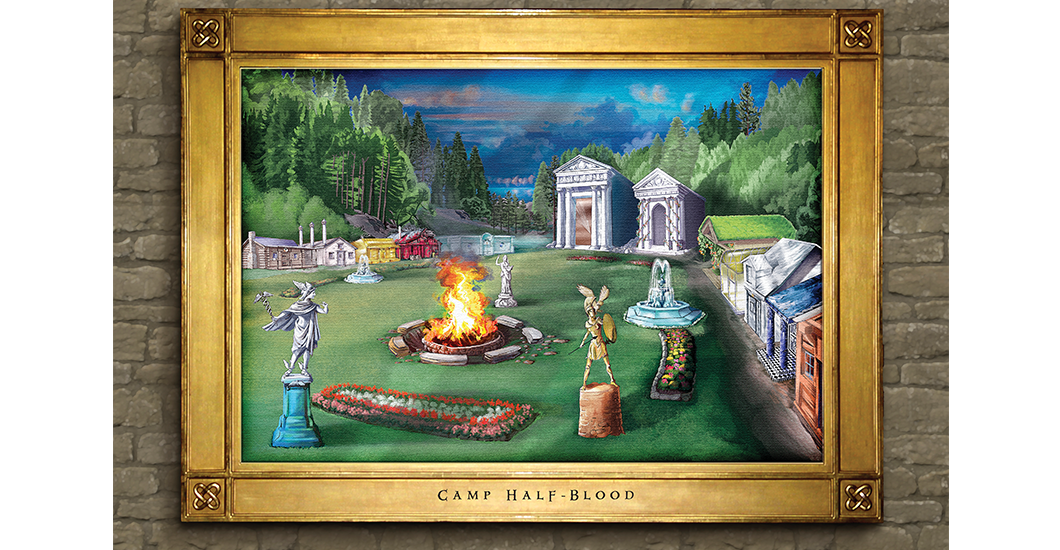
D is for demigods, which is the official term for the children of gods and mortals. Unofficially, they are also referred to as half-bloods. In the mortal world, demigods are often in danger because monsters can sense them and seek them out. In Percy Jackson and the Lightning Thief we learn that, once they reach their teenage years, most demigod children of the Greek gods make their way to Camp Half-Blood – if they’re not caught by monsters first . . .
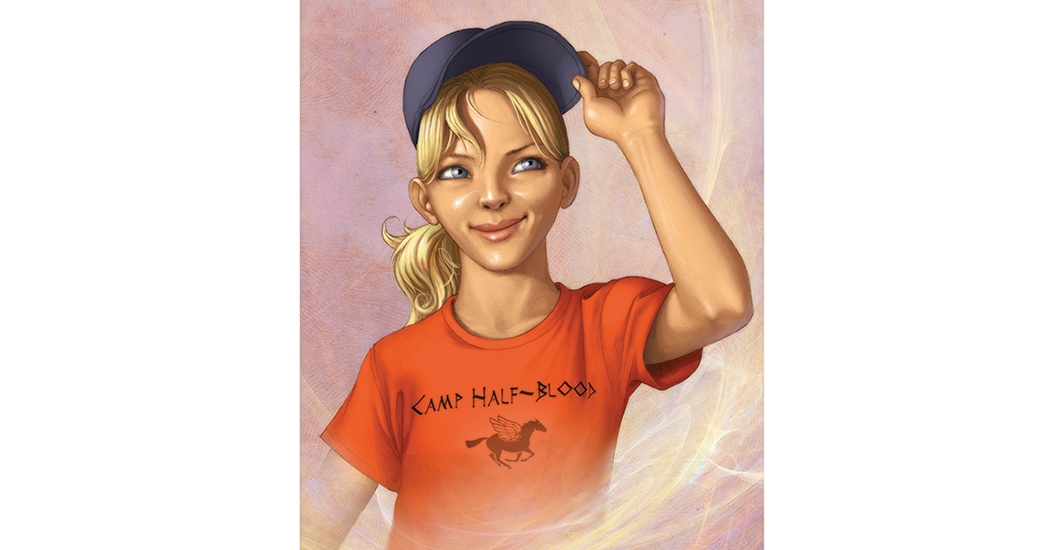
E is for einherjar – warriors who have died with bravery. Their courage in death means that they are chosen by the Valkyries to enter Valhalla, to train to be soldiers in Odin’s eternal army. The bravest of the einherjar are destined to fight in the Doomsday battle against Odin’s enemies. (Odin is the king of the Norse gods, and the Valkyries are his warrior handmaidens.) Find out how Magnus Chase becomes an einherji in Magnus Chase and the Sword of Summer.
F is for the Fields of Elysium, Asphodel and Punishment in the Underworld, the realm of Hades, Greek god of death and riches. However, apart from Elysium, these are not fields for frolicking and picnicking. Elysium is a place where good souls who have been blessed by the gods can rest in eternal peace. Those who have led neither wholly good nor evil lives are sent to the Fields of Asophodel. And, no surprise, the souls of those who have been evil in their mortal lives must endure a tortured eternity in the Fields of Punishment.
G is for Gaia, who is the Earth Mother, born when the Earth was created from Chaos and has a complex history. Gaia is a powerful being and has spent most of human history asleep in the earth. But she’s starting to wake, and in Heroes of Olympus: The Lost Hero her plan to overthrow the gods of Olympus is revealed. In the finale, The Blood of Olympus, the seven demigod heroes she’s tried to manipulate at every turn must defeat her once and for all, because if she wakes fully, she will destroy Olympus not only but civilization as we know it.
H is for House of Life. As Carter and Sadie Kane find out in The Kane Chronicles: The Red Pyramid, the House of Life is a global organization of magicians who use the magic of Ancient Egypt – and their family is part of it! In Ancient Egypt, priests channelled the power of the gods, and this was the origin of magic. The temples had a branch of magicians called the House of Life and they were known throughout the ancient world. Nowadays, each branch is based in a region of the world called a nome (see ‘N is for nome’).
I is for Iris-messaging, which is far more effective than instant messaging. Iris is the Greek goddess of the rainbow, and a messenger of the gods. For an offering of a gold drachma and a prayer to Iris, demigods and gods can send messages to each other via rainbows created by mists, water and sea sprays, and drizzle.
J is for jotun – giants in Norse mythology. The jotun are the source of many of Magnus Chase’s problems. In Magnus Chase and the Sword of Summer he encounters fire giant Surt (which doesn’t end well for him), and then in Magnus Chase and the Hammer of Thor he must venture into Jotunheim, realm of the giants, as part of his mission to retrieve Thor’s hammer. However, the jotun love nothing more than an evening of games and Jotun Juice at Utgard Lanes – they play a mean game of ten-pin bowling and pinball.
K is for karpoi, which are grain spirits. Though they look vicious, they come to the rescue in the Trials of Apollo stories. In The Hidden Oracle wild child Meg unwittingly creates a peach karpos: ‘[the peaches] blurred together in a fructose dust devil . . . Protruding from his back were wings made of leafy branches. His babyish face might have been cute except for the glowing green eyes and pointy fangs.’ Though he looks terrifying, the karpos called Peaches is fiercely loyal to Meg and will protect her at all costs – and even recruits his karpoi friends to help Meg and Apollo in The Dark Prophecy.
L is for the Labyrinth, a sprawling underground maze in Ancient Greece, built on Crete by the inventor Daedalus to contain the Minotaur. Now, like Olympus, the Labyrinth has moved westwards – and it’s expanded, on a massive scale. The Labyrinth in its current form is introduced in Percy Jackson and the Titan’s Curse, but its dangers are fully revealed in Percy Jackson and the Battle of the Labyrinth. Entrances (and exits) to the Labyrinth are all over America, including Camp Half-Blood, Alcatraz Island and Phoenix (Arizona), and there are also openings that lead to the Underworld (see ‘U is for Underworld).
M is for magic. In Ancient Egypt the high priests called upon the gods they worshipped to channel their power – they were the first magicians. And each temple had a branch of magicians, or priests, called the House of Life. In The Red Pyramid, Carter and Sadie Kane learn that the Kane family is part of the House of Life – and that they have the potential to become powerful magicians like their father.
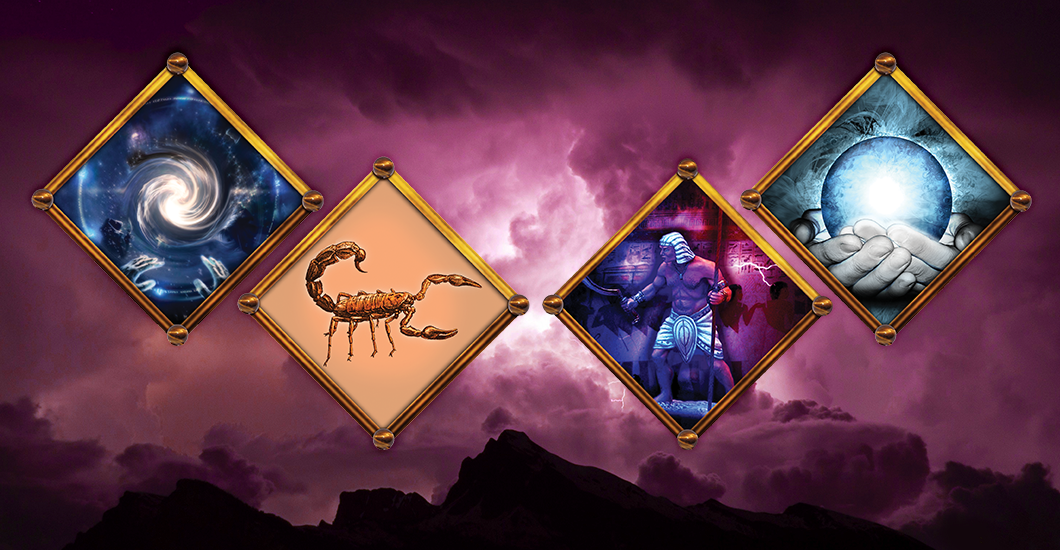
N is for nome – no, not gnome! A nome (without the ‘g’) was one of forty-two districts in Ancient Egypt, but today the nomes are global. There are 360 nomes in the world, with Egypt being the First Nome, of course. In The Red Pyramid, Carter and Sadie Kane are taken by their uncle Amos to Brooklyn House, the headquarters of the Twenty-first Nome in Greater New York, where he is the sole surviving member. London is home to the headquarters of the Ninth Nome. Can you guess in which building the London HQ might be housed?
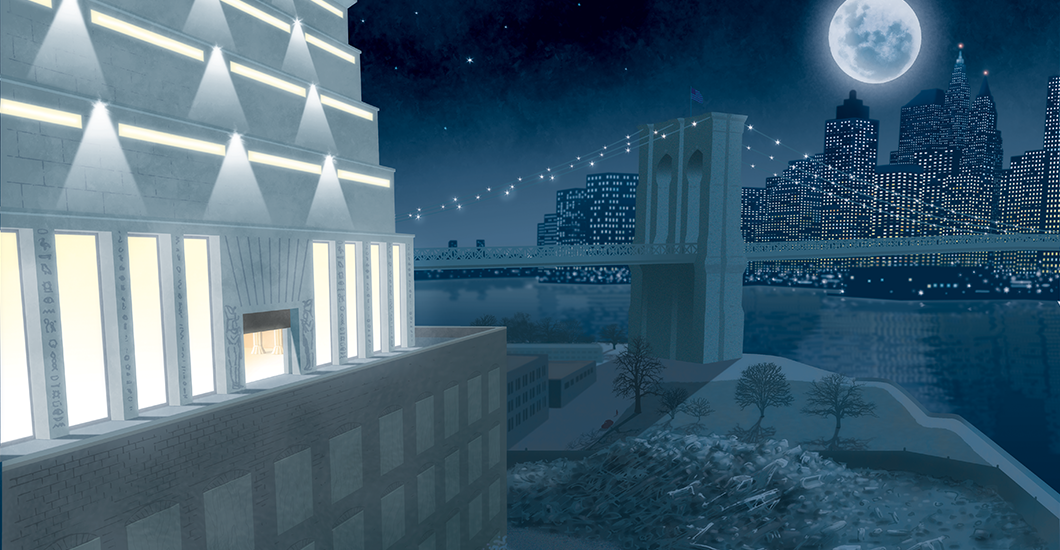
O is for Olympus – Mount Olympus to be exact. It is the home of the council of the twelve Greek gods: Zeus, Hera, Poseidon, Demeter, Athena, Apollo, Artemis, Ares, Aphrodite, Hephaestus, Hermes and Dionysus. The original Mount Olympus is in Greece, but the palace of Olympus shifts to follow Western civilization’s centre of power. Nowadays Olympus is on 600th floor of the Empire State Building in New York City. The views of Manhattan are astounding, but you’ll need a special key card to access the 600th floor via the secret elevator.
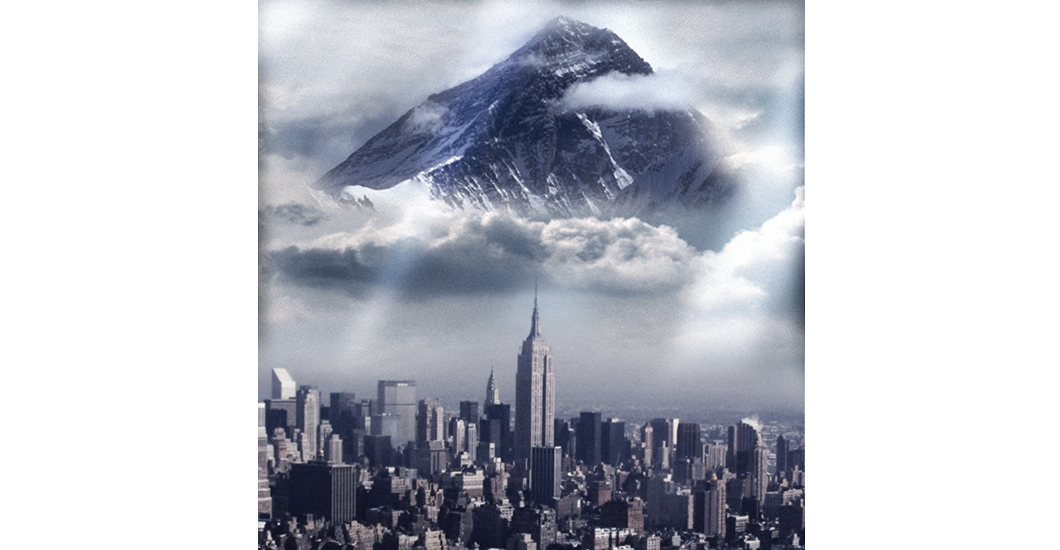
P is for prophecies, which are cryptic predictions of the future, most often given by an Oracle (at Camp Half-Blood) or Augur (at Camp Jupiter), warning of a major event in the future. The adventures of Percy Jackson, the seven demigods in Heroes of Olympus, Magnus Chase and Apollo are all instigated by prophecies. Although they don’t know what the prophecy means exactly, they use it to guide them on what they must do. (However, a prophecy given by Mars, Greek god of war, in The Lost Hero is very much not cryptic – it’s a straightforward order issued to his demigod son Frank Zhang. Mars does not care for cryptic rhymes.)
Q is for quests, the official term for the missions undertaken by demigods, usually involving up to three people. At both Camp Half-Blood and Camp Jupiter, demigods are only allowed to leave camp if they receive a prophecy and are thus granted a quest. In most cases, the person who receives the prophecy leads the quest, and they are permitted to pick one or two companions.
R is for Ragnarok – Doomsday when the Nine Worlds of Norse myth will be destroyed, and Odin and his army must battle the jotun (see ‘J is for jotun’) and Loki, Norse god of mischief and magic and artifice. In short, Ragnarok means bad times are a-coming. In Magnus Chase and the Sword of Summer Magnus must stop fire giant Surt, who is desperate to kick-start Ragnarok early. No pressure there, then.[WS1]
S is for shadow-travel, which is a way of travelling via shadows to a desired destination on Earth or in the Underworld. It can only be accomplished by creatures of the Underworld and children of Hades, but the downside is that it drains the traveller of energy, and they need time to recuperate before attempting the shadow-travel again. Shadow-travelling is definitely not to be used for casual trips to the shops!
T is for the Titans, powerful children of Gaia. They ruled Earth until they were overthrown by the Olympians, the Greek gods, who were the children of Kronos, leader of the Titans. Kronos was cut into a thousand pieces and thrown into Tartarus, the darkest realm of the Underworld, along with his fellow Titans. But, like the gods, the Titans can’t die – and they want their revenge. We witness the battle with Kronos for Mount Olympus in Percy Jackson and the Last Olympian, and learn about the fight for Mount Othrys, the Roman counterpart of Olympus, in Heroes of Olympus: The Lost Hero.
U is for the Underworld, the realm of Hades, Greek god of death. Not surprisingly, this is where souls go for eternity – and it’s also home to many monsters, such as hellhounds and the Furies, who are under the command of Hades (so don’t get on the wrong side of him). It’s generally not a pleasant place to visit – so it’s unfortunate that Percy Jackson must seek out the entrance to the Underworld and venture in on his very first quest in Percy Jackson and the Lightning Thief. (Hint: nowadays, the entrance is somewhere in Los Angeles.)
V is for Valhalla, a Norse paradise in the Grove of Glasir, Asgard, for einherjar (see ‘E is for einherjar’), where they also train to be part of Odin’s eternal army. On becoming an einherji, Magnus Chase is welcomed to Hotel Valhalla by doorman Hunding, who was once the King of the Saxons. Viking manager Helgi looks after its 540 floors, which is no easy task. Hotel Valhalla also has 540 doors that lead to the Nine Worlds, so you don’t need to climb Yggdrasil, the World Tree, to enter those worlds. Helgi reveals more about this mythical place in Hotel Valhalla: A Guide to the Norse Worlds.
W is for was - and we’re not talking about the past tense of ‘is’! Was is the name for the Ancient Egyptian symbol of power. Trainee magician Walt comes across this hieroglyph in The Kane Chronicles: The Throne of Fire when he sees it engraved on a godly staff. The symbol resembles a priest’s ceremonial knife for opening the mouth of the dead, and this particular staff belongs to Ptah, the Egyptian god of craftsmen who was also a creation god, meaning he could create and revive souls, and open any door. He was powerful indeed.
X is for, well, X. He’s a loyal half-troll who helps Magnus Chase on his first mission – and you can read more about that in Magnus Chase and the Sword of Summer. You don’t want to mess with X. He’s over six and a half feet tall, muscle-bound, and has warty skin the colour of a shark’s belly. His real name is unpronounceable (it starts with Ks and goes on for about half a minute) so his friends call him X. It’s easier that way.
Y is for Yggdrasil, the World Tree. It’s larger than any tree you could ever imagine because, as well as being the home of Valhalla, its branches hold nine worlds: Asgard, Vanaheim, Midgard, Alfheim, Jotunheim, Nidavellir, Muspellheim, Niflheim and Helheim. It’s also home to mythical creatures, including the ferocious giant squirrel Ratatosk. You can find out more about these Nine Worlds and the creatures of Yggdrasil in Hotel Valhalla: A Guide to the Norse Worlds.
Z is for Zeus, the king of the Greek gods. The action kicks off in Percy Jackson and the Lightning Thief when Zeus’s lightning bolt is stolen and Percy takes on a quest to find it – because Zeus thinks that Percy stole it, so Percy must prove he’s not the thief! The lightning bolt is Zeus’s symbol of power, forged during the great war with the Titans and used to unseat his Titan father, Kronos, from his throne. Zeus is all-powerful as the head of Olympus, and he can strip gods of their powers if they really displease him, as he does with Apollo at the start of The Hidden Oracle.
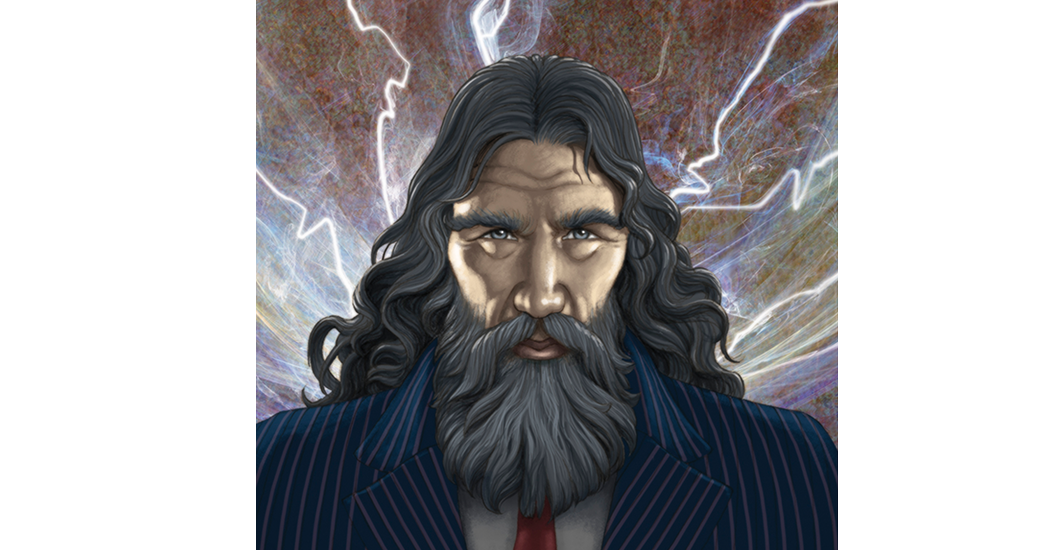
Find out more about the worlds of Rick Riordan: